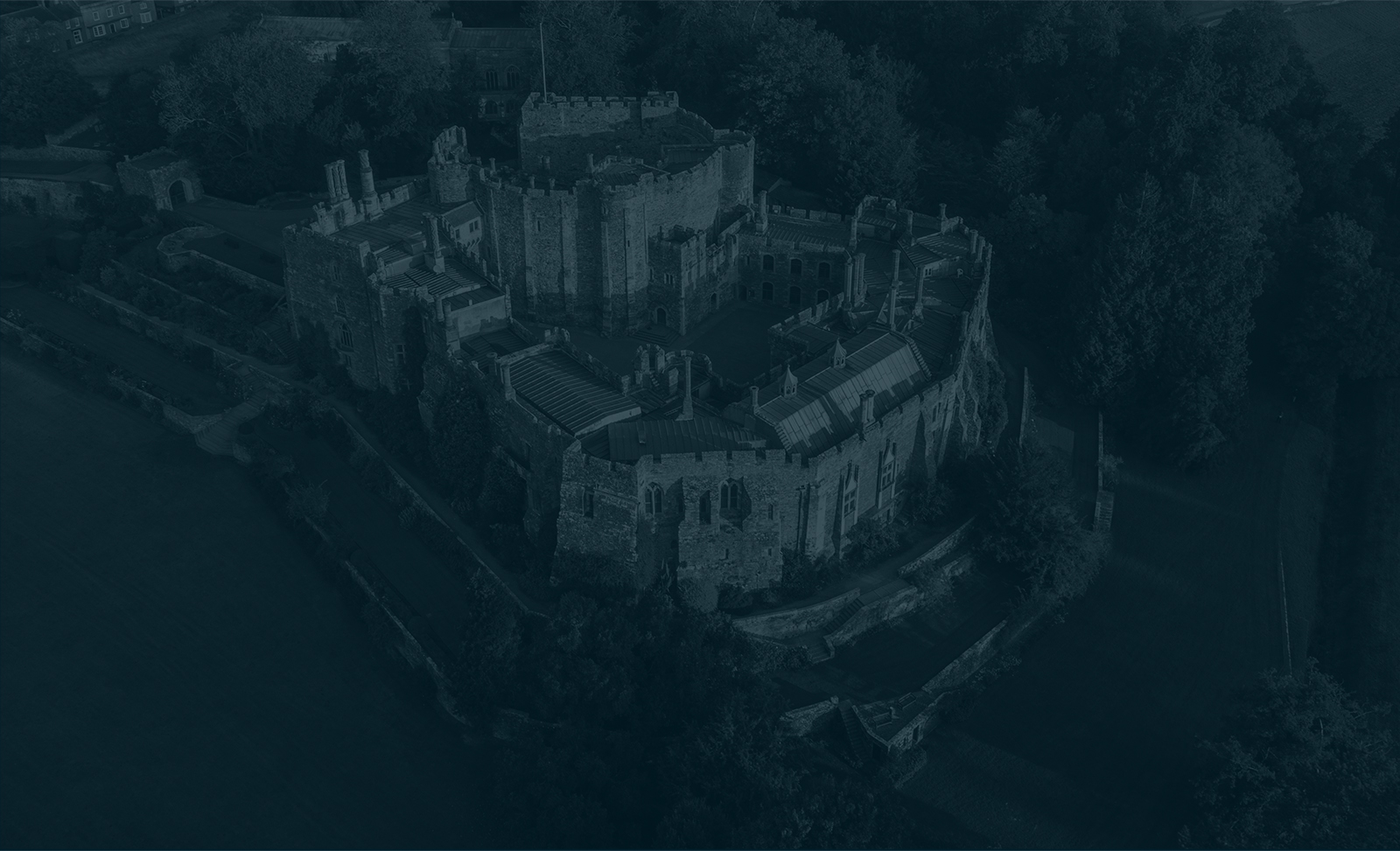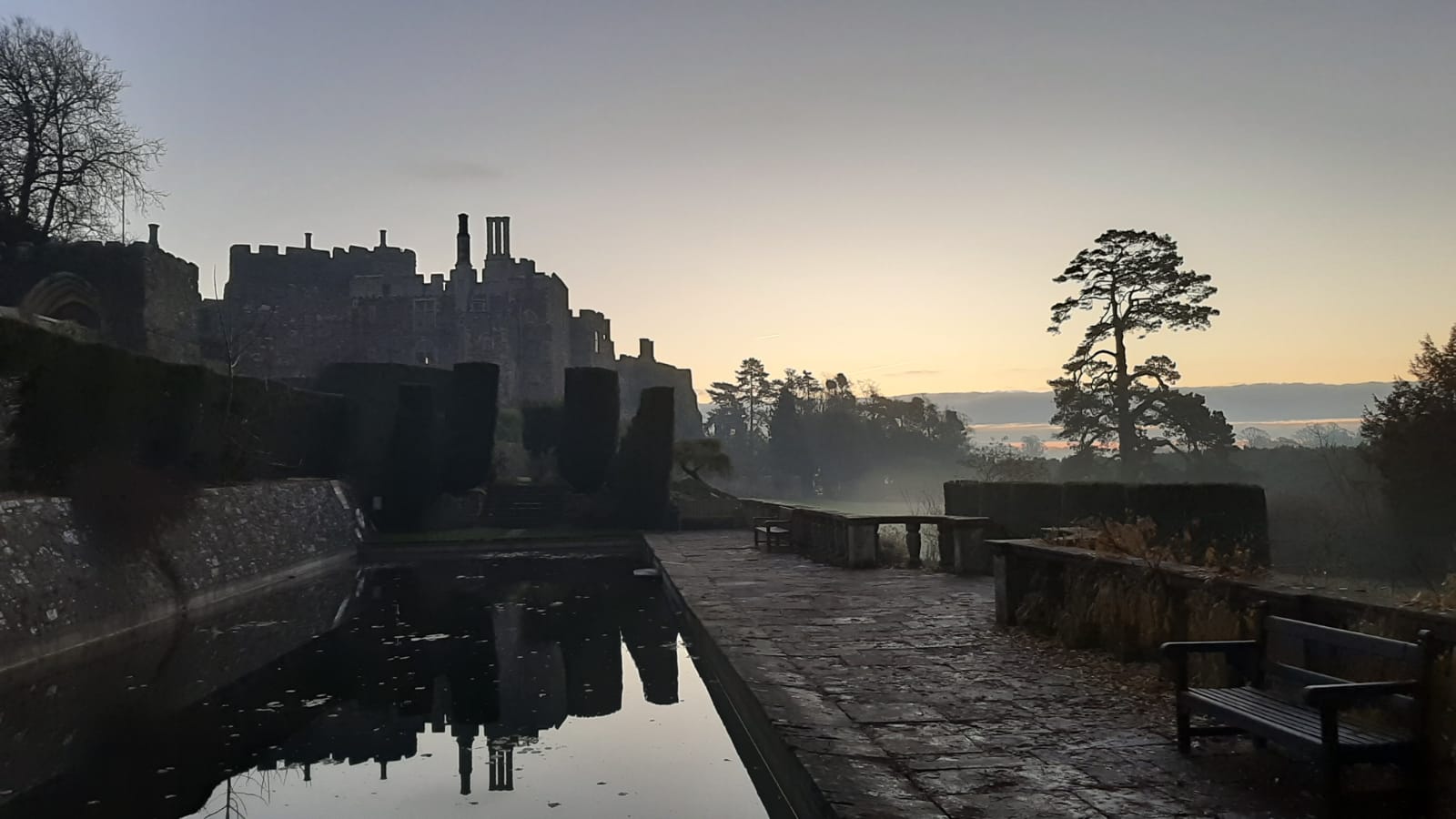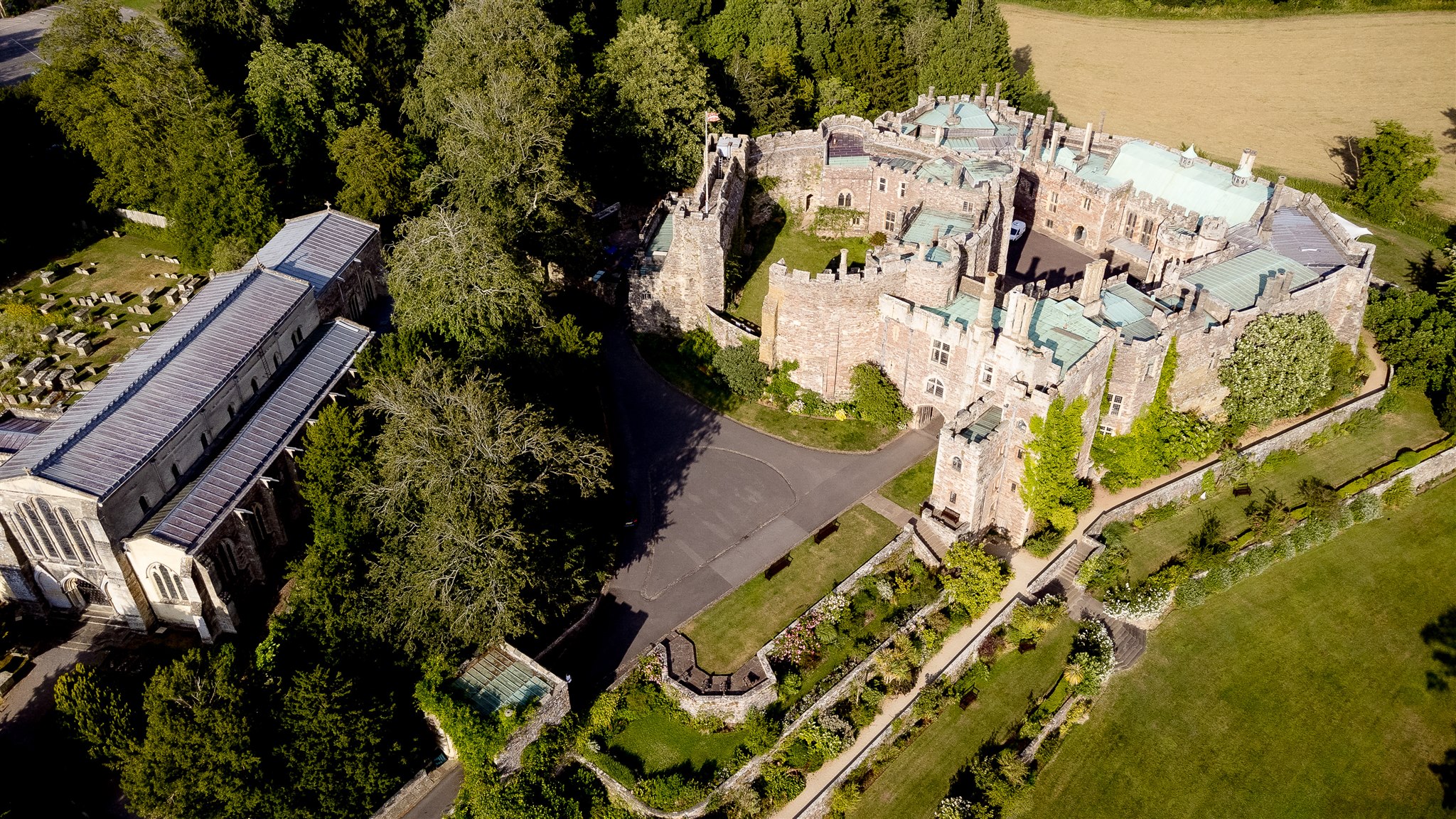The ‘Clerk of the Kitchen Accounts’ safely stored in the Berkeley Castle archives gives us a fascinating insight into what the Berkeley family and their guests were eating in Elizabethan times. This blog post follows the Berkeley family through the pre-Lenten season right up until Easter day in 1585, charting the festivities they would have enjoyed, the rules they had to adhere to, and the self-denial imposed by Lent.
In the spring of 1585, Henry, 7th Baron Berkeley and his wife, Katherine, were living at Caludon Castle in Coventry. The castle was built in the early 14th century but quickly fell into disrepair and was reconstructed several times. It was owned by the Segrave and Mowbray families and was subsequently inherited by the Berkeley family in the late 15th century.
In 1580, Henry renovated the castle so completely that it might be said ‘to have been moulded and made new’ [1], also refurbishing the brew house and stables.
Henry and Katherine had been married for thirty years and had three children, Mary, Frances and Thomas. Katherine was a member of the powerful Howard family and therefore a cousin of Queen Elizabeth I through her mother, Anne Boleyn. She was the third daughter of Henry Howard, Earl of Surrey, who had been executed in 1547 in the final days of King Henry VIII’s reign.
The Elizabethan spring was dominated by the important dates tied to Easter. The first of these was the festival of Shrovetide which began on ‘Shrove Sunday’ (the 7th Sunday before Easter) and continued through ‘Collop Monday’ (after the roasting of collops, or slices of meat) to Shrove Tuesday. ‘Shrove’ was derived from ‘shriving’ or confession of sins so that people could start Lent with clean consciences. As the last opportunity for fun before the restrictions of Lent, Shrovetide encouraged eating and drinking in excess and entertainment in the form of wrestling matches, cockfights and ball games. Festivities began in the mid-morning with the ringing of the church bell. In 1571, a Protestant preacher described Shrovetide as a time of ‘great gluttony, surfeiting and drunkenness.’ [2]
On ‘Shrove Sunday’, 21st February 1585, Henry and Katherine were celebrating Shrovetide with the marriage of their eldest daughter, Mary, to John Zouch of Codnor in Derbyshire. Marriages were popular at this time of year as weddings were prohibited during Lent. Mary was aged 30 and John was 10 years younger. John’s father, Sir John Zouch, had been made a Knight of the Bath at Queen Elizabeth I’s coronation and had assisted the Earl of Shrewsbury in guarding Mary, Queen of Scots in South Wingfield in Derbyshire. [3] Henry and Katherine hosted a great feast at Caludon Castle for the newlyweds.
In the ‘Clerk of the Kitchen’ accounts for 1585, the list of ‘straungers’ eating at dinner is extensive, including Sir John Zouch, Mary’s new father-in-law and Sir John Harington, whose family owned vast estates in nearby Rutland. At the bottom of the list are ‘cokes and laborers hired for the kichin’. [4] A few extra hands were needed as the banquet prepared was a lavish affair. The feast would have been served at either 11am or midday and consisted of two courses, with sweet dishes included in each course, rather than being served at the end. Meat was a prominent part of the Elizabethan diet with a wider variety of meat eaten compared to today, including wildfowl.
On the menu was capon in a white broth, boiled woodcock, a larded leg of mutton, roast beef, baked venison, larks, blackbirds, snipes and plovers among many others.
For those with a sweet tooth there was ‘jellie leache’ (a thick jelly-like preserve firm enough to be sliced), gingerbread and quince pie. The wedding guests also ate fritters, which were traditionally eaten during the Shrovetide festival. [5]
The wedding party stayed at Caludon Castle for over a week, enjoying the Berkeley family’s hospitality and feasting every night despite the celebrations rolling through Ash Wednesday into the beginning of Lent. For the six and a half weeks of Lent, Christians remember the events leading up to the death of Jesus Christ. Following the English Reformation, when the Church of England broke away from the authority of the Catholic church, fasting during Lent was seen by some reformers as a Catholic tradition. However, Lent continued to be observed in Elizabethan times, festivities were discouraged, and diet was restricted during this period of self-denial. In the late Middle Ages, meat, eggs and cheese were not allowed to be eaten during Lent, but by Queen Elizabeth I’s reign it was only meat that was prohibited.
Elizabethans were encouraged by the government to eat only fish on fasting days although this was not a religious requirement but a way of supporting English fisheries. Refraining from eating meat was not strictly observed, with Queen Elizabeth herself flouting the law. [6] However, fish was a large part of the Elizabethan diet as it was cheap, available fresh in most of the country and could be preserved.
Although the Berkeley family continued their celebrations into Lent, from Ash Wednesday onwards the dinner menu was significantly altered to include more fish such as ling, red and white herring, sprat, carp, salmon, skate, perch and sturgeon. However, the household continued to eat meat, but greatly reduced their diet to a few meat dishes at dinner and supper, eating roast hens, lamb, woodcock and blackbird. The family did not eat beef or venison during the whole of Lent.
The last wedding guests left after breakfast on Monday 1st March, although the newlyweds remained at Caludon Castle until after the Easter festivities, finally leaving for the groom’s home in Derbyshire on 10th May. [7]
The Berkeley family passed the rest of the Lenten season quietly. They had little company and continued their restricted diet of predominantly fish with few meat dishes. The household also observed Good Friday, which commemorates the crucifixion of Jesus Christ and his death, holding a strict fast and eating only ‘sallete and fruite and honie sopps.’ [8] Fasting on Good Friday was inherited from the traditions of the Catholic Church and was continued in Queen Elizabeth’s reign. [9] Catholic ceremonies performed on Good Friday such as the Creeping of the Cross, when the congregation went barefoot on hands and knees to kiss the crucifix laid in front of the altar, and the Easter Sepulchre, a miniature tomb prepared in the north side of the chancel where the host and the crucifix were deposited to commemorate Christ’s entombment and resurrection, had been swept away during the Elizabethan era. However, the religious significance of Good Friday was upheld with an emphasis on preaching with sermons on the passion of Christ. [10] Meanwhile, the kitchen began to prepare for the Easter feast by baking gammon, a hare and two capons.
Easter was the most important feast on the English Church calendar, celebrating triumph over death. In Protestant England it was marked by sermons on the resurrection. It was also one of the biggest holidays of the Elizabethan year which included the Monday and Tuesday after Easter, known as Hocktide, which was celebrated until the 19th century when bank holidays were introduced which cut the Easter holidays back to Monday alone. [11] With the eating of meat once again allowed, Easter was a time of great celebration. New clothes were worn and it was also traditionally a time to clean and put fresh rushes and flowers on the floor. [12] On Easter Monday, there were sports such as archery contests and fairs to enjoy. The Berkeley family no doubt savoured their Easter dinner, comprising a full range of meat, without a fish in sight.
Capon in white brothe and
mutton stewed beofe boiled
veale and bacon. Beofe
roste and a pestle of lambe
Baked, pigge, veale and
capon roste. Rabbette
chickins and pigions roste
tarte and a hare pye
lambe baked and a gamon
of bacon and red dere. [13]
- Smyth, J. The Berkeley Manuscripts: The Lives of the Berkeleys, Lords of the Honour, Castle and Manor in the County of Gloucester, from 1066 – 1618 (Gloucester, 1883) Vol. II p. 362
- Hutton, R. The Stations of the Sun: a History of the Ritual Year in Britain (Oxford University Press, 2001) p.152
- Broadway, J. The Wives of the Berkeleys: Families and Marriage in Tudor and Stuart England (Xmera Ltd, 2021) p. 54
- Clerk of the Kitchen Book 1584-1585, Berkeley Castle Muniment Room
- Hutton, R. The Stations of the Sun: a History of the Ritual Year in Britain (Oxford University Press, 2001) p.152
- Singman, J.L. Daily Life in Elizabethan England (Greenwood Press, 1995) p. 133
- Clerk of the Kitchen Book 1584-1585, Berkeley Castle Muniment Room
- Clerk of the Kitchen Book 1584-1585, Berkeley Castle Muniment Room
- Webster, T. Godly Clergy in Early Stuart England: The Caroline Puritan Movement, c. 1620-1643 (Cambridge University Press, 1997) p. 61
- Hutton, R. The Stations of the Sun: a History of the Ritual Year in Britain (Oxford University Press, 2001) p. 192
- Hutton, R. The Stations of the Sun: a History of the Ritual Year in Britain (Oxford University Press, 2001) p. 204
- Hutton, R. The Rise and Fall of Merry England: the Ritual Year 1400-1700 (Oxford University Press, 1994) p. 25
- Clerk of the Kitchen Book 1584-1585, Berkeley Castle Muniment Room
Written on
Wednesday 5th April 2023
Category
 Wednesday 5th April 2023
Wednesday 5th April 2023 by Sarah Wordsworth
by Sarah Wordsworth



